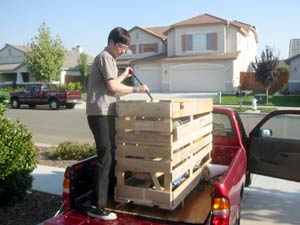 Having
a truck is comes in really handy sometimes, like when you are hauling
lumber home from the forest or moving a sarcophagus out of the city.
Having
a truck is comes in really handy sometimes, like when you are hauling
lumber home from the forest or moving a sarcophagus out of the city.The rest of a truck's life is spent moving a single person from point A to point B, just like a car. I assumed that the back of the average truck spends most of its life empty.
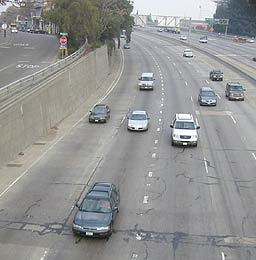
In fact, I guessed that 98% of all truck beds are empty, and that this information would support an argument against buying big trucks. Why buy a truck if the back is going to be empty all the time, right? It seemed like a waste.
Eager to prove this theory, I ventured onto a pedestrian overpass above Interstate 5 in Sacramento. I decided to count the empty trucks.
I was only counting passenger trucks with an open bed. The kind of trucks you see ads for on television, brimming with cargo, not Mack trucks or Panel trucks.
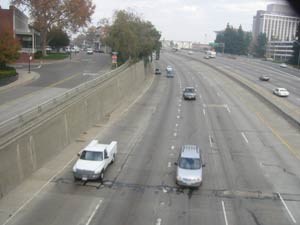 To
my surprise, many of the trucks were actually hauling loads around.
To
my surprise, many of the trucks were actually hauling loads around.
Lumber, carpet, tools, tires, pool chemicals and painting supplies were streaming north.
Three people honked, one person waved and one person flipped me off.
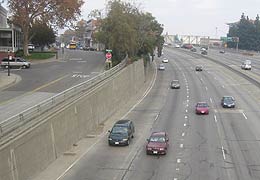
In 25 minutes I had counted 150 trucks, and 99 of them had been empty. This 66% empty ratio was much lower than I had expected. I hadn't realized that so many trucks were being so successfully utilized.
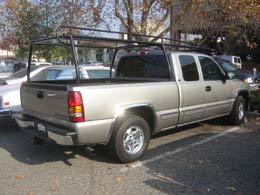 Some
of the trucks I saw that day must have been professional contractors:
masons, plumbers and painters. I wanted to find out what percentage of
non-professional people had empty trucks, so I narrowed the sample of
trucks I was counting.
Some
of the trucks I saw that day must have been professional contractors:
masons, plumbers and painters. I wanted to find out what percentage of
non-professional people had empty trucks, so I narrowed the sample of
trucks I was counting.
I decided to count trucks again, this time leaving out trucks with a roof rack, such as the one shown here.
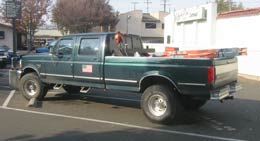 The
second survey took place at 3pm on November 26th, 2002. I stood
above the northbound lanes of Interstate 80. I counted 100 passenger
trucks without roof-racks.
The
second survey took place at 3pm on November 26th, 2002. I stood
above the northbound lanes of Interstate 80. I counted 100 passenger
trucks without roof-racks. 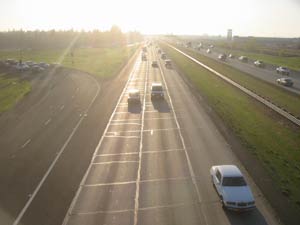 The
results were similar: 39% of the trucks were hauling goods, and 61
of them were empty. My hypothesis had been incorrect. People use their
trucks all the time.. or at least the trucks that I saw were being well
used.
The
results were similar: 39% of the trucks were hauling goods, and 61
of them were empty. My hypothesis had been incorrect. People use their
trucks all the time.. or at least the trucks that I saw were being well
used.
Along with this adjustment of my perception, I also realized that an empty truck is no more wasteful than an empty back seat. Most cars AND trucks in the US drive around with 75% of the cargo space unutilized...what difference does it make if it is interior or exterior space?
The primary question when you are buying a truck might be: What will I get the most use out of, an interior back seat or a giant exterior cargo area?
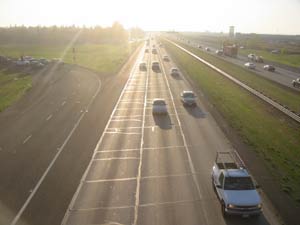
Then again, maybe a motorcycle would be a better choice.
More Collecting Data | Mobile Phones | Free Throws


